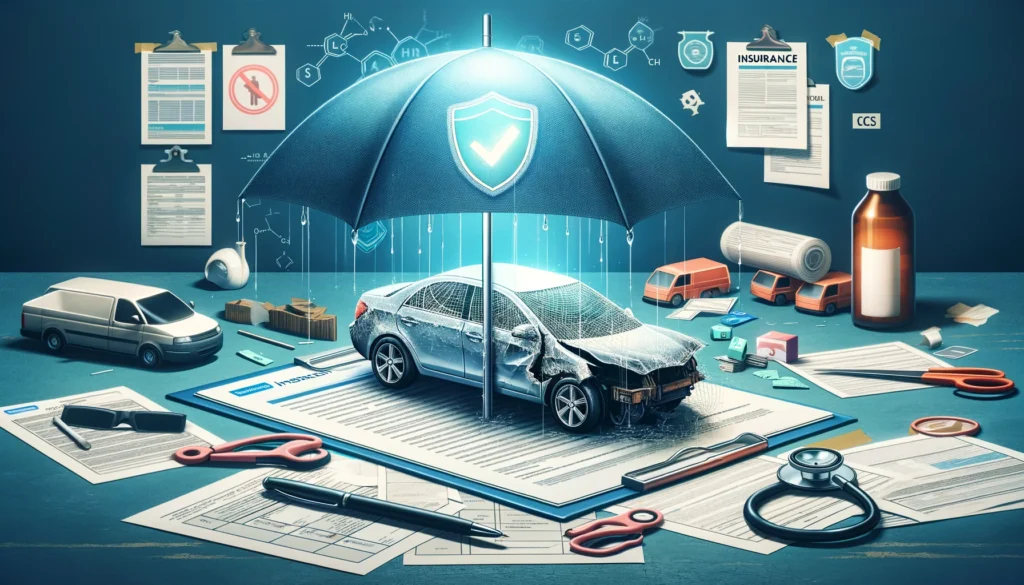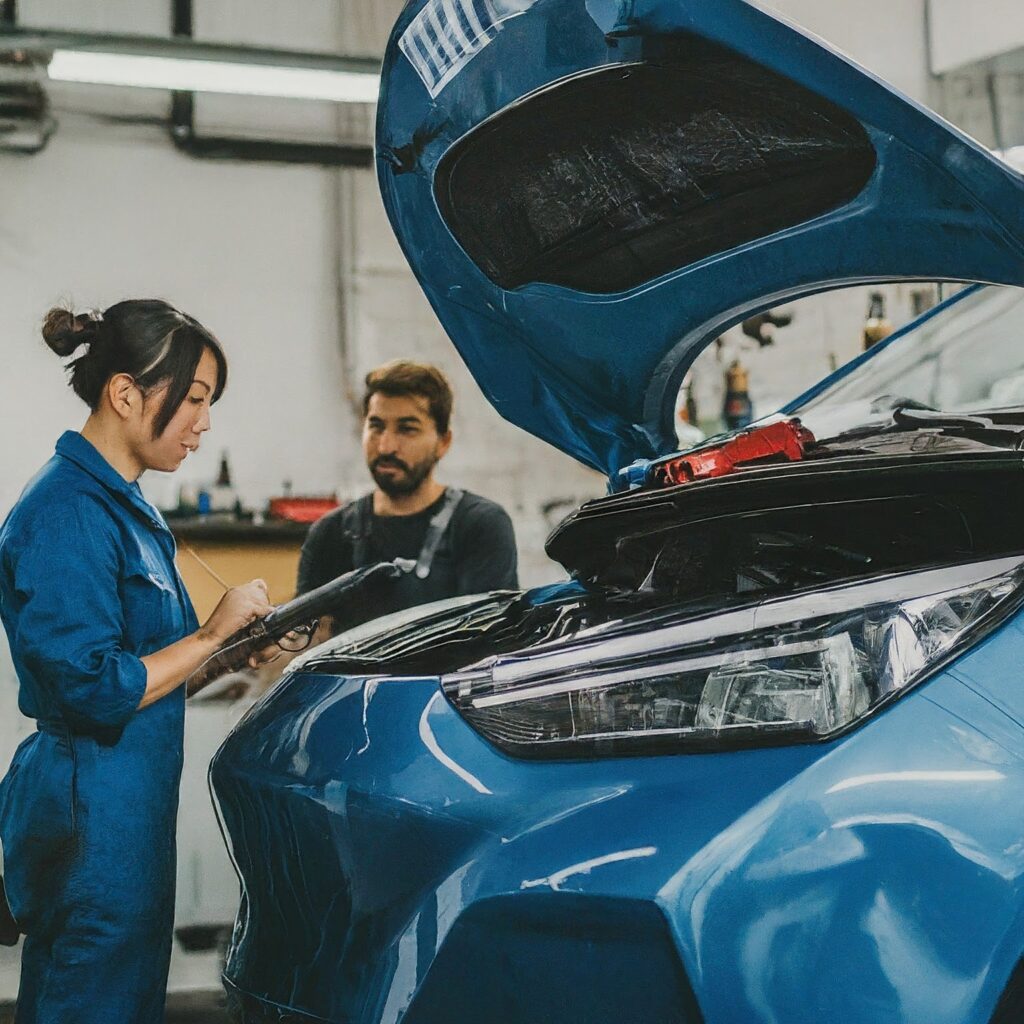Owning a car comes with an abundance of responsibilities, and maintaining car insurance is one of the most crucial. But what exactly does car insurance cover repairs? This comprehensive guide goes deep into the world of car insurance and repair coverage. We’ll explore what’s covered, what’s not, and how to navigate the process of getting repairs covered by your insurance.

Understanding the Types of Car Insurance
Before delving into repair coverage, it’s essential to understand the different types of car insurance available:
- Liability Insurance: This is the most basic form of car insurance, mandated by most states. It covers bodily injury and property damage caused to others in an accident where you’re at fault.
- Collision Coverage: This covers repairs to your own vehicle, regardless of who’s at fault in an accident.
- Comprehensive Coverage: This covers damage to your vehicle caused by events other than collisions, such as theft, vandalism, fire, natural disasters, and animal collisions.
Remember: Liability insurance does not cover repairs to your car, while Collision and Comprehensive coverages do, but with specific limitations.
What Repairs Does Car Insurance Cover?
Now, let’s delve into the specifics of repair coverage:
1. Collision Coverage:
- Covers repairs to your vehicle after a collision with another car, object, or even while flipping over.
- Covers hit-and-run accidents where the at-fault driver cannot be identified.
2. Comprehensive Coverage:
- Covers repairs for damage caused by events other than collisions, including:
- Theft
- Vandalism
- Fire
- Flood
- Hail
- Windstorm
- Animal collisions
It’s important to note:
- Both Collision and Comprehensive coverages come with a deductible, which is the amount you’ll need to pay out of pocket before your insurance kicks in.
- The specific events covered under Comprehensive coverage may vary depending on your policy and location.
| Coverage Type | Services Provided | Notes |
|---|---|---|
| Liability Insurance (Required in most states) | * Covers bodily injury and property damage caused to others in an accident where you’re at fault. | * Does not cover repairs to your car. |
| Collision Coverage (Optional) | * Covers repairs to your own vehicle after a collision with another car, object, or even while flipping over. * Covers hit-and-run accidents where the at-fault driver cannot be identified. | * Has a deductible you pay before coverage kicks in. |
| Comprehensive Coverage (Optional) | * Covers repairs for damage caused by events other than collisions, including: * Theft * Vandalism * Fire * Flood * Hail * Windstorm * Animal collisions | * Has a deductible you pay before coverage kicks in. * Specific events covered may vary by policy and location. |
| Uninsured/Underinsured Motorist Coverage (Optional) | * Covers medical expenses and property damage if you’re hit by a driver with no insurance (uninsured) or not enough insurance (underinsured) to cover the costs. | * Varies by state and coverage limits chosen. |
| Medical Payments Coverage (Optional) | * Covers medical expenses for you and your passengers regardless of who is at fault in an accident. | * Coverage limits and exclusions may apply. |
| Personal Injury Protection (PIP) (Optional) | * Covers medical expenses, lost wages, and other related costs due to injuries sustained in an accident, regardless of fault. | * Available in some states, often with coverage limits. |
What Repairs Does Car Insurance NOT Cover?
Car insurance does not typically cover:
- Routine maintenance and wear and tear: This includes oil changes, tire rotations, brake pad replacements, and other routine upkeep.
- Mechanical breakdowns: If your car breaks down due to a mechanical issue, your insurance won’t cover the repairs. Consider an extended warranty for such situations.
- Cosmetic damage: Scratches, dents, and other purely cosmetic damage typically aren’t covered unless caused by a covered event.
- Normal wear and tear: As your car ages, parts naturally wear down and need replacement. Insurance doesn’t cover these replacements unless directly caused by a covered event.
Pro tip: Always refer to your specific policy documents for a detailed breakdown of what’s covered and what’s not.
How to Get Repairs Covered by Your Insurance
If your car needs repairs due to a covered event, follow these steps:
- File a Claim: Contact your insurance company and report the incident as soon as possible. They’ll guide you through the claims process.
- Gather Documentation: Collect evidence of the damage, such as photos, police reports (if applicable), and repair estimates from qualified repair shops.
- Choose a Repair Shop: You have the right to choose a repair shop, but your insurance company may have preferred shops with negotiated rates.
- Pay your Deductible: Once the claim is approved, you’ll need to pay your deductible before repairs begin.
Understanding Exclusions and Limitations
It’s crucial to understand any exclusions and limitations in your policy. These may include:
- Age and mileage restrictions: Some policies may limit coverage for older cars with high mileage.
- Act of God exclusions: Certain acts of nature, like earthquakes, may be excluded from comprehensive coverage.
- Driver exclusions: Coverage may be limited or excluded for specific drivers listed on the policy.
Carefully review your policy documents or contact your insurance provider to understand any specific exclusions or limitations that might apply.
Additional Tips on Car Repair Coverage
- Shop around and compare quotes: Before purchasing car insurance, compare quotes from different companies to find the best coverage at the right price.
- Consider your needs: Don’t just buy the cheapest policy. Analyze your driving habits, car value, and risk tolerance to determine the necessary coverage.
- Maintain a good driving record: Maintaining a clean driving record can lead to lower car insurance premiums and potentially better repair coverage options.
- Review your policy regularly: As your car ages and your driving habits change, it’s crucial to review your policy coverage and adjust it if needed.



Pingback: The Essential Car Insurance Checklist for New Drivers - MovingVolts